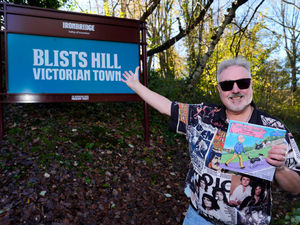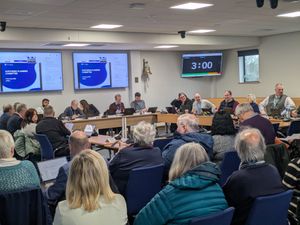Mary Webb: The woman whose Shropshire-inspired novels are still relevant today
Mary Webb was a novelist who brought her home county to her novels as none have done before or since.
She drew her literary inspiration from the landscape, people and folklore of the rural West Midlands and wove it into her work.
Shropshire towns and features cropped up in her books, albeit with disguised names, as she shared her love of her county with readers.
Although her books such as Precious Bane and The Golden Arrow were well regarded by critics, none were bestsellers and when she died at the age of 46 her passing went almost unnoticed.
It was the British Prime Minister Stanley Baldwin, a big fan, who started the process of posthumous success when, seven months after her death, he paid tribute to a “neglected genius”.
It led to an unprecedented demand for her work.
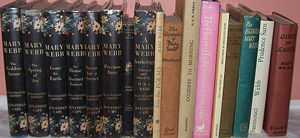
Today there is a Mary Webb Society which keeps her name alive, fostering interest in her works, her writing, and the landscape which inspired her.
Liz Stamps, vice chair and membership secretary of the society, which is celebrating its golden jubilee this year and has special events lined up, said: "Mary Webb’s work is as relevant today as when it was first written.
"Her passionate love of nature resonates with us even more in the 21st century, when climate change, pollution and threats to wildlife overshadow our daily lives. Mary would have been an eco warrior, of that we can be sure."
Mary's work has also been immortalised by Hollywood, with the making in 1949 of the movie Gone To Earth starring Jennifer Jones. It was filmed in part on location in Shropshire and involved hundreds of local people as extras.
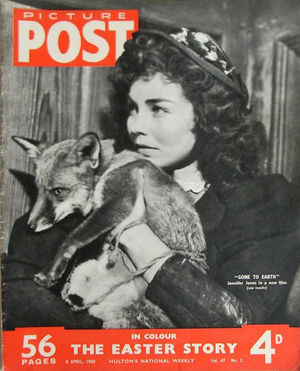
Liz, who lives in Telford, said: "Mary Webb’s enduring appeal is sometimes hard to describe.
"She manages to connect with people on many levels and for all sorts of reasons. Her lyrical style in poetry and prose, her love of Shropshire with its varied landscapes and its local people, fired her imagination and were the inspiration for her novels and poetry.
"From an early age she enjoyed walks in the countryside with her beloved father from whom she inherited her love of nature and the rich folklore, legends and dialects of Shropshire.
"She had an extraordinary eye for detail which she developed during her long walks in the landscape. She would sit for hours deep in thought observing and absorbing her environment, developing the themes for her work.
"One example of this is that while she was preparing her masterpiece and best-known novel, Precious Bane, she would sit on the banks of Bomere Pool near Condover. Workmen would pass her on their way to work and would be surprised to find her still there on their way home."
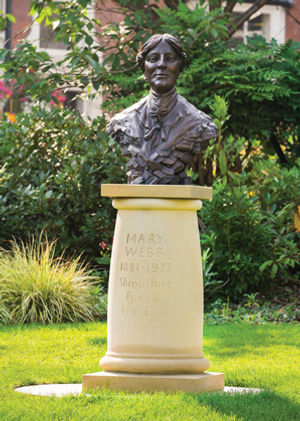
The first meeting of the newly-formed Mary Webb Society took place at The Church Hall in Meole Brace on June 12, 1972, the same date that Mary and Henry Bertram Law Webb, a nephew of the famous Dawley-born Channel swimmer Captain Matthew Webb – Henry was himself an aspiring writer – were married 60 years previously in the nearby Holy Trinity Church.
Today it continues to thrive, with members all over the world. The honorary vice president is Donald Meredith, Mary’s nephew.
As part of its 50th anniversary celebrations there will be the unveiling of a blue plaque at Mary’s birthplace, Leighton Lodge, now a private family home.
Liz said: "I didn’t really discover Mary Webb until a friend loaned me a copy of Precious Bane. That was it – totally hooked and hell-bent on reading everything she wrote, and then the biographies. The stand-out biography is without doubt The Flower of Light by Dr Gladys Mary Coles and a must-read for all Mary Webb devotees.
"Having been bitten by the bug I really wanted to find out more about this fascinating writer and meet with similarly smitten folks. That was back in 1989 when the BBC film of Precious Bane, filmed in Shropshire and starring Janet McTeer, John Bowe and Clive Owen, was released. I sought out The Mary Webb Society and have never looked back.

"Our gatherings are friendly and welcoming and there is always something new to discuss about the life and work of Mary Webb. We are incredibly lucky to have Gladys Mary as our president, our resident expert."
Mary Webb was born Mary Gladys Meredith on March 25, 1881, at Leighton, near Buildwas, into an upper middle class family. To them she was Gladys.
Her literary talent started to shine through at an early age.
In her lifetime she was to live at a number of addresses in Shropshire, and it is notable that when she lived away at Weston-super-Mare and London she yearned to return.
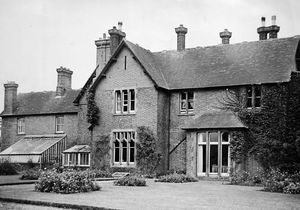
Pretty as a youngster, she was struck down by Graves’ disease, a thyroid condition, at the age of 20, which gave her bulging eyes and a swollen neck.
"Mary became very self-conscious as a result, avoiding social gatherings and wearing large hats and scarves to disguise her condition," says Liz.
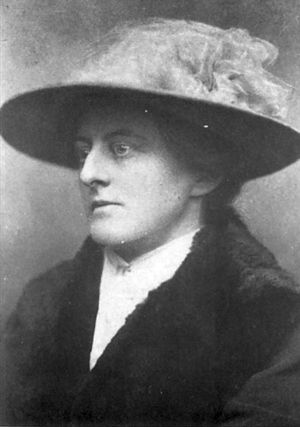
"Autobiographical elements can be seen in the heroine of Precious Bane, Prue Sarn, who is afflicted with a hare-lip and is treated as a social pariah."
Her union with Henry was a meeting of minds.
"They shared a love of literature and the natural world, particularly the hills of Shropshire. They were married at Holy Trinity church, Meole Brace on June 12, 1912. Mary wore a simple muslin gown and carried wild flowers.
"The wedding guests caused quite a stir in the community as Mary had invited 70 old and destitute people, mostly from the women’s ward of Cross Houses workhouse. Mary had ordered a large trap to transport her special guests.
"The gardener’s daughter was the only bridesmaid. Her father, speaking of Mary years later, said: 'She had a lovely disposition. I’ve never in all my days met anyone with a more loving heart.'
"There is still a plaque today on one of the pews stating 'Mary Webb worshipped here.'”
The newly-weds had to move to Weston-super-Mare, where Henry had a teaching job.
"She wrote her first novel, The Golden Arrow while at Weston. It is set around the Long Mynd and Stiperstones. On their return they lived at Pontesbury and at The Nills near The Stiperstones.
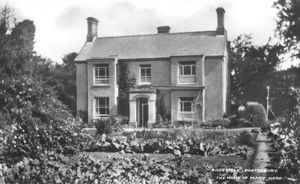
"While at Pontesbury in 1914 to 1916, she and Henry did their bit for the war effort by growing vegetables in their garden and selling them at Shrewsbury market."
Mary's first published work had been a poem which appeared in the Shrewsbury Chronicle of October 18, 1907, about the Shrewsbury train disaster three days earlier. Her brother Kenneth Meredith had taken it in to the paper without her knowledge and it was published anonymously.
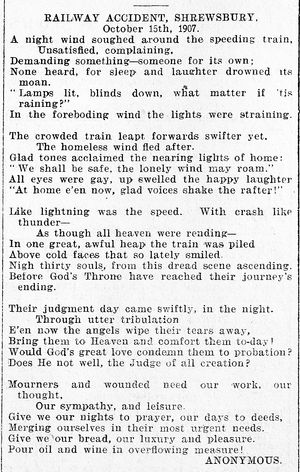
Liz says that in 1918 Mary fulfilled a dream to live on Lyth Hill.
"She designed a small cottage and engaged a local builder to build Spring Cottage. Here she would write on the veranda whilst enjoying the panoramic view and spent many happy hours exploring the spectacular landscape. There is a toposcope on Lyth Hill with a section on Mary Webb.
"In recent years the current owners of Spring Cottage have submitted plans to demolish it and replace it with a much larger modern house. Although the cottage has been extended over the years it is still possible to identify Mary’s original modest dwelling.
"The much-revised plans were finally approved in August 2021 with the proviso that the house can be demolished but the original cottage must be identified and reconstructed on the site.
"The original plans are located at Shropshire Archives which should be invaluable in identifying the original structure. It is testament to the affection that Shropshire people have for Mary Webb that numerous objections to the demolition were sent to the planners."
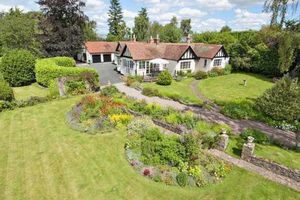
Liz says Mary’s generosity was sometimes misplaced.
"The Webbs moved to London in 1921 both for Henry’s work and to enable Mary to engage with the London literati and become better known. In this post-war period Mary was shocked by the poverty in London and started giving money away to those she felt were in urgent need. Unfortunately, some took advantage of her generous nature.
"London life was difficult for her but there were some positives. She made some influential friends and continued writing. She even produced Precious Bane at this time, partly in London and partly at Lyth Hill. She obtained some reviewing work and was becoming more confident.
"In 1926 she was awarded the prestigious Prix Femina for Precious Bane. This was awarded for 'the best imaginative work in prose or verse descriptive of English life by an author who has not gained sufficient recognition.'
"This was a much-needed boost to her morale and Mary was delighted. She was able to travel back to Spring Cottage at weekends and invited some of her London literary friends like John and Susan Buchan.
"Despite some success and fluctuating sales of her novels, her health was deteriorating and the Webbs’ marriage was failing. Henry had become infatuated with one of his young pupils, whom he married after Mary’s death. Mary returned to Spring Cottage alone. She died on October 8, 1927, at St Leonard’s-on-Sea, with her old governess Miss Lory at her bedside. She was 46.
"Her final novel Armour Wherein He Trusted remained unfinished but was published as it stood."
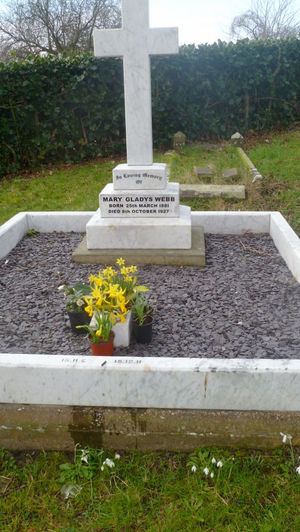
Mary received posthumous fame when Prime Minister Stanley Baldwin, an admirer of Precious Bane, heard about her death and was saddened by the lack of recognition for “someone in the first flight of English women novelists.”
In a speech at the Mansion House in 1928 he addressed the Royal Literary Fund Society praising her work “of absolutely first-class quality.”
"He had previously written to Mary expressing his admiration for Precious Bane. Mary was delighted to receive his letter and responded enclosing some violets from her garden.
"Following this tribute there was a resurgence in the popularity of her work. On the back of this, her publisher Jonathan Cape bought the rights from previous publishers and planned collected editions and reprints with introductions by prominent figures including Stanley Baldwin.
"How sad for Mary that this much desired acclaim was never received in her lifetime. She is buried in the old part of Shrewsbury cemetery, Longden Road, where her grave is maintained by the Mary Webb Society."
As for Henry, he and his second wife Kathleen had two children and lived in London, Henry renting out Spring Cottage. He died in spectacular style, falling – or, some think, jumping – from Scafell, England’s highest peak, in 1939.
"Kathleen inherited the literary estates of both Mary and Henry. In 1943 she married Jonathan Cape and had another son. She died of an incurable disease, ironically also at age 46."
Kathleen was the third and last wife of Cape, who was thrice widowed.
Mary Webb is commemorated in various ways in Shropshire, including in 2016 the commissioning and funding of a bronze bust by artist Jemma Pearson in the garden at the front of Shrewsbury library.
And modern Salopians can of course continue to enjoy Gone To Earth which takes advantage of the county's stunning landscape, and point out friends and relations among the 300 or so locals who were recruited as extras, although sadly some sequences shot in Shropshire were either cut from the final film or reshot in London.

Like Mary, the movie has had something of a renaissance. It had a decidedly mixed reception from critics, and flopped on its British release. A heavily reworked version released to American audiences as The Wild Heart fared no better.
However the passing of time seems to have led to a new appreciation of its merits as the online movie database IMDb gives it a respectable score of 6.9 out of 10.
Mary Webb
Born: Mary Gladys Meredith at Leighton Lodge, Leighton, on March 25, 1881. Known as Gladys to her family.
Early life: Spent her childhood years at The Grange, Much Wenlock, where another five Meredith children were born. The family moved around Shropshire but their favourite childhood home was The Old Mill, Maesbrook, at Meole Brace.
Marriage: Mary had started attending a literary society at Miss Southern’s Corner House, Meole Brace, and it was there that she met Henry Webb, a Cambridge philosophy graduate, writer and teacher. Married at Holy Trinity church, Meole Brace, June 12, 1912. They had no children.
Books: Principal works include The Golden Arrow (1916), Gone To Earth (1917), The House In Dormer Forest (1920), and Precious Bane (1924).
Death: October 8, 1927, at St Leonard’s-on-Sea. Buried in Shrewsbury.




